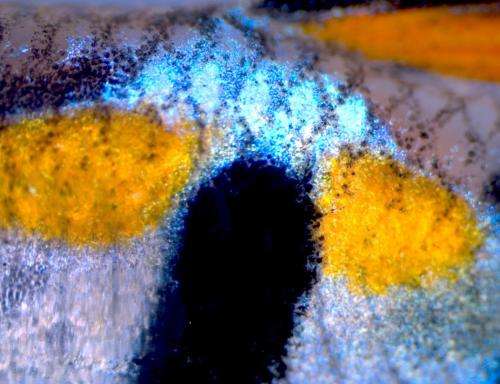A guppy's spots formed by layers of color cells

At least three pigment cell types from multiple layers of skin contribute to the color patterns of male guppies, according to a study published in PLOS ONE on January 22, 2014 by Verena Kottler from the Max Planck Institute for Developmental Biology and colleagues.
Female guppies select their mate based on the size and number of colorful spots on a male's body and fins. Orange, blue, and black patterns indicate a male guppy's ability to evade predators and to forage and process nutrients, but the organization behind these pigment patterns is poorly understood. Using electron microscopy, the authors investigated the relative contributions of different pigment cell types to the guppy's visible skin color by observing pigment cell distribution in colored spots on the trunks and fins of male guppies.
Scientists multiple pigment cell types contributed to the orange and black spots, and the pigment cell organization was similar in both captive and wild guppy strains. Transparent, reflective, and iridescent pigment cells called iridophores were found in all colored spots. Previous studies have mostly ignored this pigment cell type because it is difficult to detect in photographs, but the authors suggest that its consideration is more important than previously thought, as iridophores might interact with other pigment cell types.
More information: Kottler VA, Koch I, Flötenmeyer M, Hashimoto H, Weigel D, et al. (2014) "Multiple Pigment Cell Types Contribute to the Black, Blue, and Orange Ornaments of Male Guppies (Poecilia reticulata)" PLoS ONE 9(1): e85647. DOI: 10.1371/journal.pone.0085647
Journal information: PLoS ONE
Provided by Public Library of Science




















